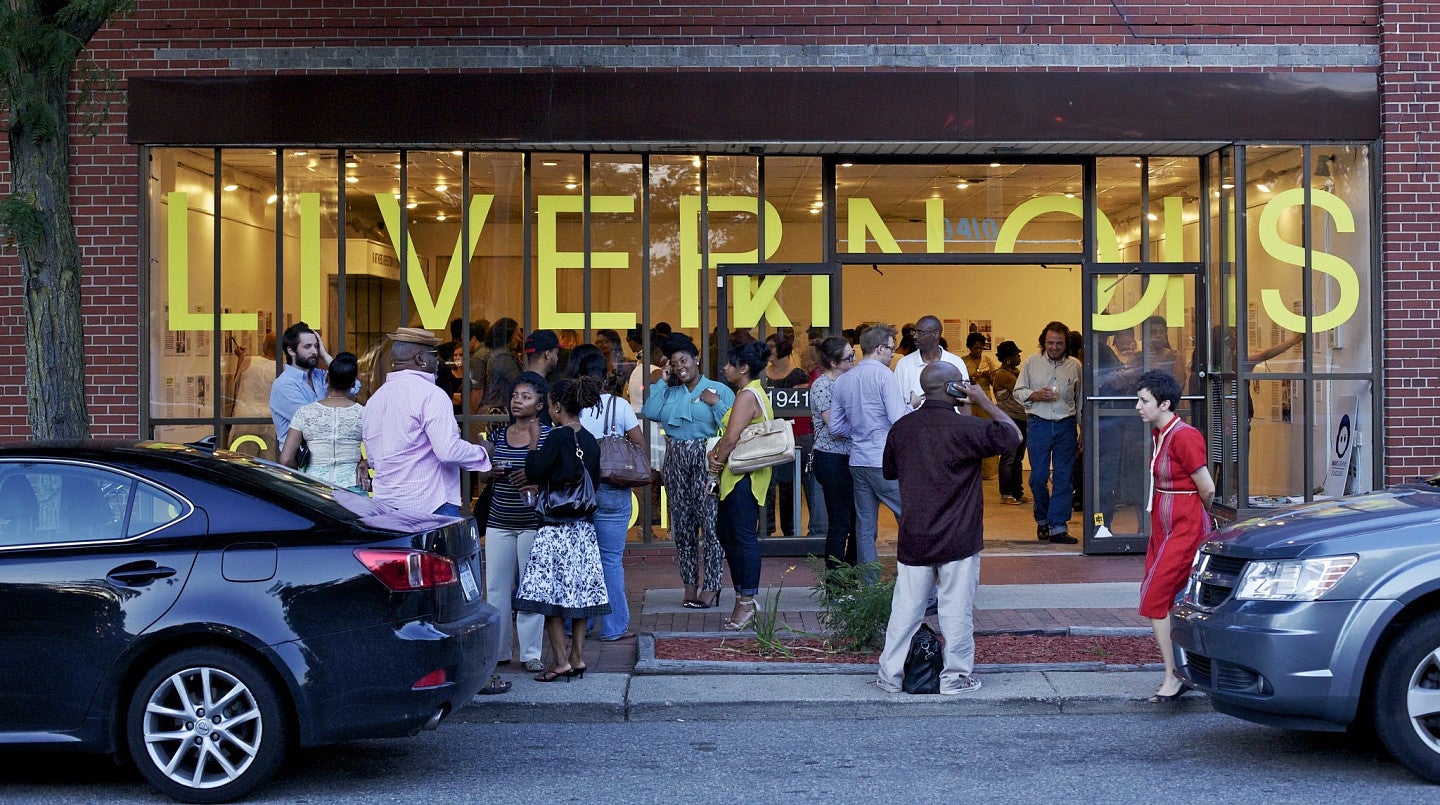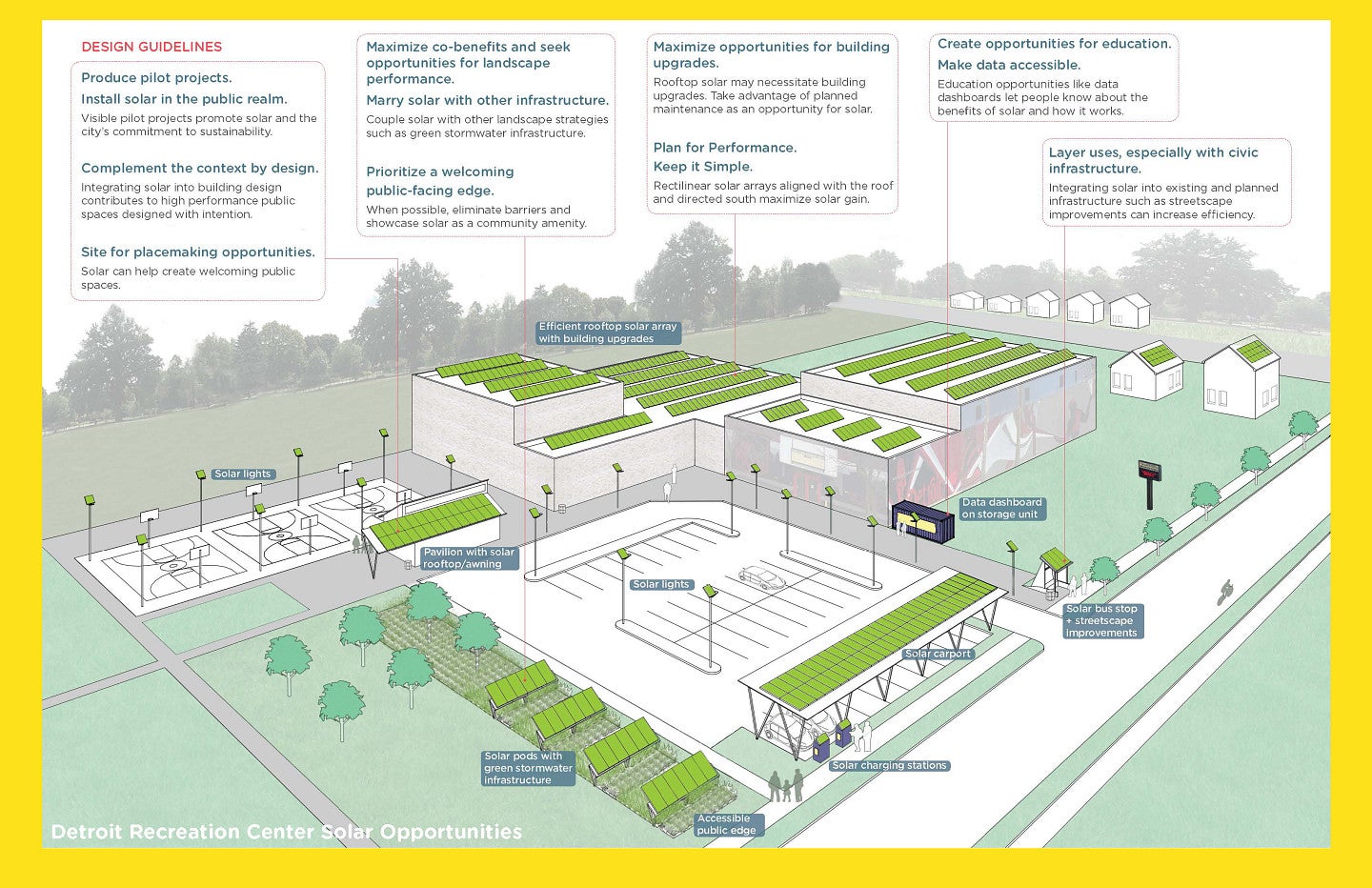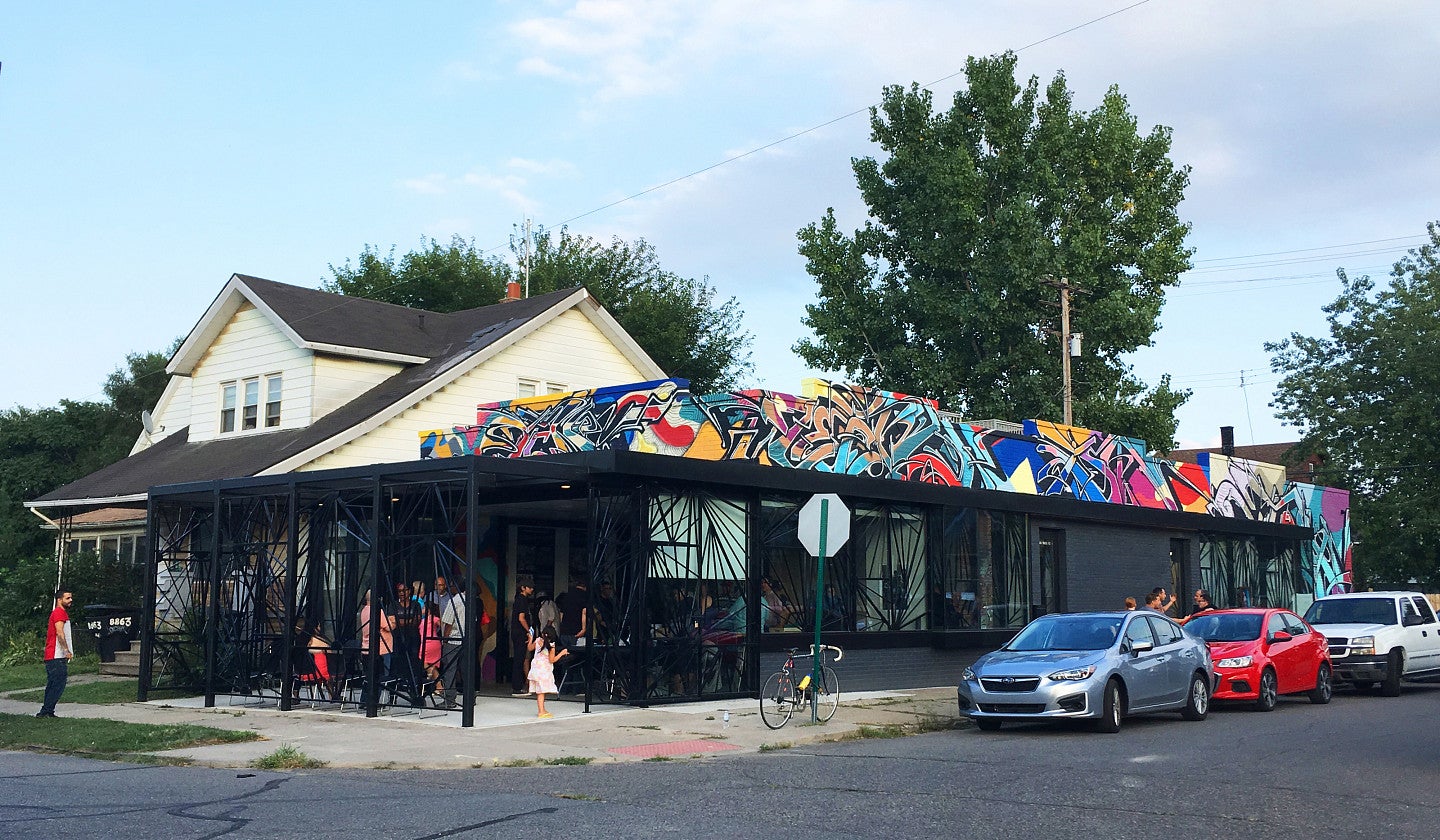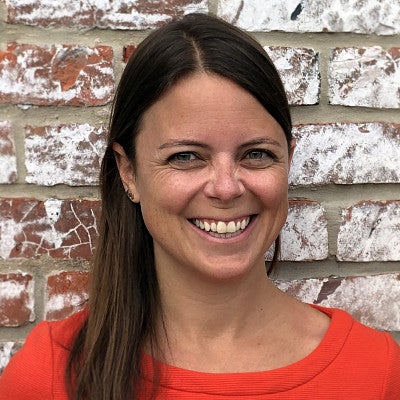
Meet Two SAE ODDucks
Ceara O'Leary and Dylan Wood join the School of Architecture & Environment as new tenure-track faculty

photo courtesy of Mandy Moran and DCDC, featured in modeldmedia.com/features/avefashion513.aspx

photo courtesy of Ceara O'Leary and DCDC, featured project dcdc-udm.org/projects/detroit-solar-feasibility-assessment
The College of Design is committed to providing an education rooted in sustainability, collaboration, social justice, and thoughtful creation. This responsibility is reflected through the hiring of award-winning faculty, conducting ground-breaking research, and educating the next generation of designers that walk through our halls. The School of Architecture & Environment (SAE) has added two new tenure track faculty members to reinforce and build on the college's storied history in environmental design and its new expertise in transpecies design. These latest additions to the Oregon Design Duck (ODD and ODDuck) flock are flying high and already making an impact.
New Assistant Professor Ceara O’Leary, AIA, joined SAE in the fall of 2022 with a focus on spatial justice and theory, an important point of emphasis in SAE. O’Leary’s experience, focus, and research are centered on the inclusive design of community spaces. Having spent twelve years at three different community design centers across the country, O’Leary is excited to bring her experience and focus to SAE and the college.
“The department’s focus on spatial justice, including the Design for Spatial Justice Initiative, was a draw for me,” explained O’Leary. “The position has a focus on placemaking as well as spatial theory, specifically working with diverse communities often excluded from design processes and projects, and that is really where my work has focused throughout my career. I know University of Oregon (UO) students are hungry for related coursework and I’m excited to be able to bring that experience and expertise to the UO.”
Thanks to her years of experience working with communities and in the urban environment, O’Leary brings leadership and innovation to the department’s curriculum, building on the historic accomplishments in environmental design and spatial justice, while solidifying its commitment to creating vibrant, sustainable, and inclusive communities through the next generation of UO graduates and designers.
“Teaching the next generation of Oregon designers and cross-pollinating with the various departments and schools at the university is a thrilling proposition and I look forward to building the historic legacy of this department into the future," said O'Leary. "The curriculum focus here is unique and fits with my experiences and areas of interest. From the inclusion of spatial justice to sustainability to the focus on place, culture, and the human aspects of architecture in the impressive core curriculum, this department offers a rare educational experience for young architects.”
O’Leary comes to the UO from the University of Detroit Mercy (UDM) where she was a School of Architecture and Community Development Professor of Practice. She taught public interest design and community development courses and was the Co-Executive Director of the Detroit Collaborative Design Center (DCDC), a university-based multidisciplinary community design office.

photo courtesy of Ceara O'Leary and DCDC, featured project dcdc-udm.org/projects/8869-avis

photo courtesy of Dylan Wood and ICD University of Stuttgart, featured in fastcompany.com/90723097/watch-as-this-unbelievable-wood-furniture-assembles-itself
While with DCDC, O’Leary led citywide collaborative community design and planning projects. Previously, O’Leary was the associate director of UDM’s Master of Community Development program and was an Enterprise Rose Architectural Fellow at the DCDC. In addition to speaking nationally on DCDC’s work, community design, and development, O’Leary is the past chair of the AIA Housing and Community Development Knowledge Community Advisory Group, was named “Top Urban Innovator” by Next City Vanguard in 2015, and completed a fellowship with the ULI Larson Center for Leadership. She graduated from the University of California, Berkeley, with masters degrees in Architecture and City & Regional Planning. O’Leary earned her undergraduate degree from Brown University.
With her unique experience and perspective, O’Leary will expand the department’s focus on the spatial, aesthetic, tectonic, and social aspects of buildings and cities to issues, places, and populations that traditionally have been on the periphery of architectural scholarship and practice. She is joined by the latest faculty member and assistant professor, Dylan Wood.
Dylan Wood joins SAE as an Assistant Professor of Architecture in winter 2023. An American architect, builder, and researcher whose work embraces the intersection of computational design and material science, Wood's research focuses on developing intelligent design and fabrication principles for smart shape-changing materials as a form of material robotics that can be applied in building systems, construction, and manufacturing. When Wood discovered the open faculty position with SAE, he found the unique research history and freedom aligned perfectly with his career’s trajectory and expertise.
"There is a strong legacy of research in architecture and buildings at UO going back to Ed Allen and G.Z. “Charlie” Brown. Over the last decades, their research and the current labs at UO Architecture have focused on sustainability in the design of buildings systems and how they operate to use less energy and to make healthier environments," explained Wood. "My research complements the innovative work being undertaken by these labs, including the tremendous work from TallWood Design Institute (TDI), by looking at the sustainability of how we build, looking at the materials we use, and developing new process through the lens of computational design and fabrication."

photo courtesy of Dylan Wood and ICD/ITKE University of Stuttgart, featured in uni-stuttgart.de/en/research/forschung-leben/1-2020/adaptive-building/

photo courtesy of Dylan Wood and ICD University of Stuttgart, featured in fastcompany.com/90723097/watch-as-this-unbelievable-wood-furniture-assembles-itself
He has studied at the University of Southern California, earning his Bachelor of Architecture degree, Magna Cum Laude, and graduated from the University of Stuttgart with a Master of Science with honors and a Doctor of Engineering. Professionally, he has worked as a designer and computational fabrication specialist at Barkow Leibinger Architects in Berlin, Germany, and DOSU Studio Architects in Los Angeles, California. His expertise and experience are a welcome addition to the acclaimed SAE faculty and the experts at TDI.
"I come from a heavy research background in Europe, where the common perception is that they have this huge lead when it comes to the research and application of mass timber," said Wood. "But that gap is rapidly closing thanks to this surge of knowledge and excitement in the Pacific Northwest (PNW) and Canada. Wood is the best regenerative building material we have, so to be here, in the PNW with access to all this sustainable material and the hardcore scientist and researchers who are passionate about sustainable buildings is a perfect storm for huge leaps in innovation and research."
At the Institute for Computational Design and Construction (ICD) at the University of Stuttgart, Wood worked under the direction of Professor Achim Menges and in collaboration with researchers from the Max Planck Institute for Physical Systems, ETH Zürich, and EMPA, Dübendorf.
Most recently he established and led the Material Programming Research Group at the ICD and is co-founder of the German spin-off hylo tech, which works on developing and deploying methods of material programming as form generation techniques for high-performance building components and adaptive systems. Wood's work focuses on the use of computational design approaches for the utilization of sustainable natural materials in new forms of light-touch construction and passive building systems.
"Working with SAE gives me the freedom to work as both a designer and researcher, something that is not very common with most Architecture schools," explained Wood, "while working with our partners at TDI and Oregon State University to further develop and build on the burgeoning reputation of the PNW as an epicenter of wood science and engineering sets the stage for a dynamic and exciting future for SAE, DSGN, and the UO, as well as the rest of the country."

photo courtesy of Dylan Wood and ICD/ITKE University of Stuttgart, featured in redshift.autodesk.com/articles/bending-wood
Learn More
Want to learn more about our latest ODDucks? We have you covered with a collection of publications, videos, or websites provided by the profiled faculty. Click one of the buttons below to learn more.


